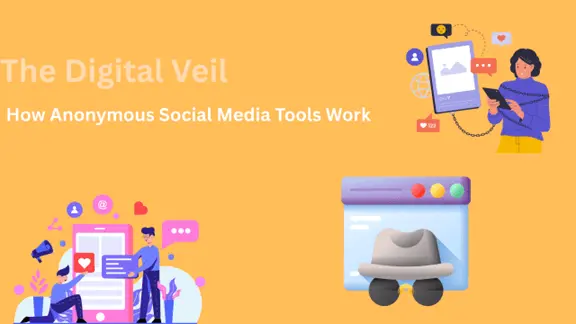Have you ever wanted to check an Instagram Story or a public profile without leaving a digital footprint? It’s a common thought in an age where every click and view is tracked. This desire for discreet browsing has given rise to a host of anonymous social media viewers and tools. But what’s going on behind the curtain? It’s not magic; it’s a clever combination of well-established technologies designed to act as your digital intermediary.
Proxy Servers
It all starts with a simple but powerful concept: misdirection. At the heart of nearly every anonymous viewing tool is a proxy server. Think of a proxy as a middleman or a digital courier. When you want to view a public Instagram Story through a story viewer, your request doesn’t go directly to Instagram’s servers. Instead, it goes to the tool’s proxy server first.
The proxy server then makes the request to Instagram on your behalf, using its own IP address, not yours. Instagram sees the request coming from the proxy, not from your device. The content is then relayed back to you through that same proxy. This process effectively masks your digital identity, making your visit anonymous to the target account. For a deeper dive, resources like Cloudflare’s guide on proxy servers offer a great explanation of the fundamentals.
The Speed Factor
But simply hiding your identity is only half the battle. These tools also need to be fast and reliable. If every request had to go through the full proxy-to-platform-to-proxy cycle in real time, loading would feel slow and clunky. That’s why most anonymous viewers rely on caching technology as a performance shortcut.
Caching means temporarily saving copies of content so it doesn’t need to be fetched again right away. For instance, when someone views a trending public Story, the server stores it for a short time. If another user requests the same Story soon after, the tool delivers the cached version almost instantly.
This not only makes the experience smoother and more consistent but also ensures that heavy traffic can be handled efficiently. By reducing duplicate requests, caching lowers strain on servers, conserves bandwidth, and minimizes the chances of platforms detecting unusual activity or automated access patterns. In practice, it’s the difference between a frustrating wait and a seamless, almost invisible browsing experience.
Navigating the Privacy vs. Policy Tightrope
This brings us to a crucial, and often debated, aspect of these tools: the ethical and legal landscape. It’s important to distinguish between privacy and platform policy. Viewing publicly available content is not illegal. However, using automated scripts or third-party applications to access a platform’s data often goes against its Terms of Service (TOS). While platforms have their rules, user interest in privacy remains high.
In fact, some reports suggest that most social media users are more concerned about their digital privacy now than they were a few years ago. This growing demand has led to the development of various tools designed for anonymous social media browsing, which operate by fetching public data without requiring a user to log in. Organizations like the Electronic Frontier Foundation (EFF) often discuss the nuances of digital privacy, highlighting the ongoing tension between user anonymity and platform control.
The Future of Anonymous Browsing
Anonymous social media viewers are part of a larger conversation about how people interact with digital platforms. As privacy awareness grows, so does the demand for tools that allow users to control how their data is shared. At the same time, platforms are continually updating their policies and technical defenses to maintain control over their ecosystems.
This dynamic creates an ongoing cycle of innovation and restriction. For users, the future likely holds even more sophisticated intermediary tools, possibly blending elements of VPNs, proxies, and encryption. For platforms, it may mean tighter monitoring and smarter detection systems. The outcome will ultimately depend on how much value society places on digital privacy versus platform compliance.
Frequently Asked Questions
Are these anonymous viewing tools legal to use?
Using a tool to view public content is generally not illegal.
Can a platform like Instagram see that I’m using a third-party viewer?
They cannot see that you specifically are using it. They can, however, identify and potentially block the IP addresses of the proxy servers these tools use if they detect an unusually high volume of requests coming from a single source.
Do these anonymous viewers work for private accounts?
No. These tools can only access content that is already public.
What is the main difference between using a VPN and one of these tools?
A VPN (Virtual Private Network) encrypts all your internet traffic and routes it through a server, masking your IP address for everything you do online.
Why do these tools only work with public accounts?
Because the proxy servers and caching systems can only fetch content that is already publicly available.
